Matador Network's Blog, page 159
June 6, 2024
I Spent Two Days Riding Waymo Autonomous Cars in Phoenix. It’s Perfect for Travelers.

My palms were slicker than a pool cue in Arizona heat as I walked out of Phoenix Sky Harbor International Airport in late May, and that wasn’t because of the desert sun. I was about to climb into the back of a Waymo self-driving car and relinquish all control to the bots – well, the very polite and hopefully competent algorithms, at least. I’d never ridden in an autonomous vehicle, and felt about as comfortable approaching one as I did boarding my first roller coaster at age seven. I wasn’t nervous because of the concept, necessarily, but because I hadn’t yet developed a frame of reference for how it worked. Phoenix, known for its sunshine and saguaros, was about to become the backdrop for my own personal technological odyssey.
Riding Waymo One, the autonomous rideshare service that operates heavily throughout metro Phoenix, was the primary reason I visited the city. Waymo operates autonomous rideshares in San Francisco and 63 square miles of Los Angeles. While discussions with airports in those markets are underway, Phoenix Sky Harbor International Airport is currently the only airport in the world fliers can reach via an autonomous rideshare.
Over the course of two days and several rides, my stance about this service evolved from anxious to excited. The concept is perfect for travelers because it eliminates the need for a rental car, and it’s more affordable and streamlined than other rideshare services. I now believe autonomous vehicles are the future of urban transit for travelers, a transportation revolution rising from the Valley of the Sun.
How Waymo One works
My nerves rattled before hopping into my first Waymo One ride from Phoenix Sky Harbor International Airport. Photo: Tim Wenger
“Waymo offers Phoenix visitors a convenient, safe, and private transportation option as they arrive into Sky Harbor,” Anjelica Price-Rocha, a Waymo spokesperson, told Matador. “It’s a fun and exciting new way to experience the greater Phoenix area, and we hear from many travelers that hailing a Waymo is an activity they add to their list of ‘must-dos’ while in town.”
Phoenix is, at present, Waymo’s largest service market by a wide margin. The company recently surpassed 50,000 paid rides per week and more than 1 million fully autonomous rides. As of June 5, Waymo services 315 square miles in greater Phoenix, providing autonomously-driven rideshares to residents and visitors of the nation’s fifth-largest city. It now also services the Salt River Pima–Maricopa Indian Community north of Mesa and east of Scottsdale.
Booking and routing a Waymo One, the autonomous vehicle option, is similar to what frequent rideshare users are accustomed to with Uber and Lyft. Download the Waymo One app, connect your Google account and payment method, and from there you’re set to input a destination within its range and request a ride. A short time later, a shiny white Jaguar I-PACE will arrive, your initials displaying on a rotary screen atop the vehicle. It’s also possible to book a Waymo One through the Uber app.
“We’ve partnered with Uber to enable their users to hail a Waymo in Phoenix, which is a fantastic opportunity for even more people to experience our autonomous ride-hailing service,” Price-Rocha says.
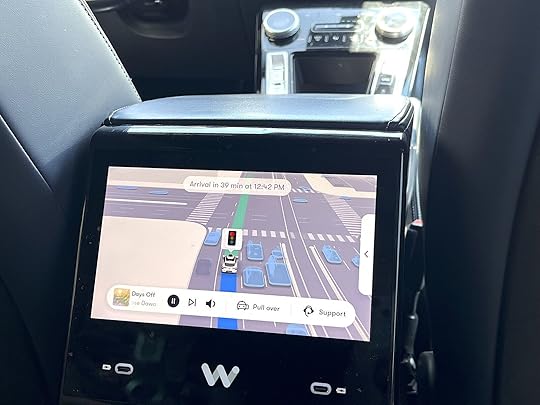
The screen shows riders exactly what the Waymo sees. Photo: Tim Wenger
It’s impossible not to notice the rapidly spinning LIDAR displays on the sides, top, and rear of Waymo vehicles. These devices act as the eyes and brain of the Waymo by building and enacting 3D maps of the car’s surroundings and everything moving, flashing, blinking, or otherwise active within them. I couldn’t resist the urge to stick my pinky out toward the rear LIDAR and let it graze its tip, a display of immature curiosity I admit, but I maintain that it was harmless. The encounter lasted fewer than two seconds.
Once I’d satisfied that shallow craving and snapped a few photos of the car’s exterior, it was time to get inside. The I-PACE vehicles arrive locked as a buffer against scheming ride swipers, and can only be unlocked by the ride hailer in the Waymo One app. Quick side note: It’s imperative that your phone does not die between the time when you request the ride and the point at which it arrives, as has happened to me on occasion when booking Ubers at airports after long hauls where my phone battery didn’t survived the flight, otherwise you won’t be able to get in.
The car will wait seven minutes after arriving for the hailer to unlock the doors in the app before labeling the rider a no-show and departing.
Rides are available 24 hours a day, seven days a week. The company plans to add family-friendly features like car seats by request in the near future. All Waymo vehicles are electric, and return automatically to Waymo’s lot when in need of a charge. There, the vehicle displays a “low charge” warning, parks at an open charger, and a technician plugs the car in. Despite being most prevalent in Phoenix, many Waymo cars have California plates likely due to the location of the company’s headquarters in Mountain View, California.
What to know about taking a Waymo to or from Phoenix Sky Harbor International Airport
Do you see the ghost? Photo: Tim Wenger
Booking a Waymo to or from Phoenix Sky Harbor International Airport is similar to taking a Waymo elsewhere in the city with a few exceptions. Waymo can deposit riders at either the 24th Street or 44th Street Sky Train stations 24 hours a day. It’s a quick (and free) train ride into the terminal from either. From 10 PM to 6 AM, Waymo can drop off at the terminal directly. I used the service at both Sky Train stations, as I landed in the morning and left mid-afternoon the following day.
When the car arrived I popped open the trunk to place my roller bag by pushing a button on the bottom of the trunk door. The door then opened automatically when I arrived at the hotel, and the car also voiced a friendly reminder to grab anything I’d put back there. At the top of the trip, the same friendly female voice reminded me to buckle up and offered a couple tips for riding.
My 20-minute ride from the airport to a hotel in Uptown cost about $16. The same ride booked via Uber is about $19 for the standard UberX service. Everywhere I rode around the Phoenix area, which included shorter rides around Uptown and downtown, a longer ride out to Tempe, and from Tempe back to the airport, cost between $10 and $20.
What it’s like to ride in a WaymoWhat stuck out the most to me about my first Waymo experiences was how quickly I became comfortable with riding in a driverless car. By the third ride the novelty had nearly worn off. I brought a GoPro with me to film my facial expressions during the first few rides, figuring there’d be some moments of shock and awe, but the footage was so boring that none of it made it to publication. I was surprisingly calm throughout. Perhaps I’m overly trusting of technology, or maybe, turning the driving over to machines is such a natural progression that it simply isn’t that big of a deal once you’ve experienced it.
I imagined it driving to the Denver airport, located far outside the city center and requiring a highway to reach. Or climbing a Colorado mountain pass in winter, the road covered in fresh-fallen snow. Each of these situations seem a stretch based on Waymo’s current operating procedure, but not far off in the grand scheme of automotive evolution. It struck me that in a decade, autonomous cars traversing these byways with ease will not just be possible, but ubiquitous.
I was also surprised at how normal the service has become in Phoenix, and how accustomed to it people there have become. Nearly everyone I spoke to on my trip, from the bartender at a posh downtown cocktail joint to the front desk clerk at my hotel, seemed to view Waymo as just the way things are now, and a routine part of getting around the metro area that’s as accepted as Uber, transit, or driving oneself. This contrasted sharply with how people back home in Colorado view riding in an autonomous vehicle. “Never heard of it,” a buddy had told me when I casually dropped that I was heading down to Phoenix to do a story on the company. “You’re not getting me in one of those things,” was my wife’s response. Multiple people including my mother iterated something along the lines of, “Do you think it’s safe?”
Despite my pre-trip anxieties, my own research combined with the fact that the company gained license to provide rides to testers back in 2018 had led me to believe that, indeed, riding in a Waymo is safe.

The Jaguar I-PACE is a good-looking car. Photo: Tim Wenger
My experience backed this up. The driving is conservative but not overly cautious as I’d expected. Waymo avoids interstate highways and other high-speed roads. This meant I spent a lot of time cruising the wide boulevards of Phoenix and even got to tour some side streets and neighborhood roads.
The riding experience was largely smooth, with a couple instances that stood out to me. At one point it pulled up to a pedestrian crosswalk separate from a traffic light, with a person on the other side out of view to me through the window. The Waymo slowed to a stop for her to cross. Another time it got a little jerky at a point where we approached a red light and another vehicle switched into our lane directly in front of us as we slowed. The Waymo crunched the brakes, though I’m not certain I wouldn’t have done the same thing had I been behind the wheel. At one point, two young skateboarders rode towards the vehicle in the bike lane to the right of the driving lane. The car slowed significantly from 30 mph to about 10 mph but didn’t lurch or jerk out of the way. On several occasions we passed bicyclists and the Waymo slowed but made no sudden movements.
I wavered between feeling unsettled and comforted by the fact that the steering wheel moves as if someone is turning it. The more I rode, the more I grew accustomed to this. A screen posted between the two front seats gives riders in the back a view of what the car is seeing as it sees it.
There are a few cameras inside the Waymo vehicles. These are used primarily for emergency situations. I wonder, however, how closely monitored the vehicles are. If I were stuck in traffic and decided to pee in a bottle in the back seat, would anyone notice or care?
On that note, multiple theoretical situations arose in my brain about why a driverless car may be preferable to a chauffeured one. I am a man and have had largely pleasant experiences with rideshare drivers around the world, but it’s well documented how the experience is different for women and people of color — particularly at night and if they’ve been drinking. There have been many times where I’ve hopped in a rideshare after a long day of work or a long flight and all I want to do is scroll my phone and not talk to anyone, but the driver keeps peppering me with questions. Waymo avoids that situation as well. The more scenarios like these I brainstormed, the more the rise of Waymo and similar autonomous rideshare services seems not only useful but inevitable.
Since returning home I think often of how Waymo would react in situations I face frequently while commuting. I live in a small town in western Colorado, where I commute primarily by e-bike and often on two-lane county roads without so much as a shoulder, let alone a bike lane. That means I ride toward the edge of the driving lane so cars can pass on my left as necessary. Would a Waymo undertake this maneuver, which requires momentarily dipping over the double yellow lines into the opposing lane to overtake me on the bike? Or would it slow down and proceed at the slow speed at which I’m riding?
I posed this question to Price-Rocha.
“The Waymo Driver has been carefully designed to anticipate and respond to behaviors unique to cyclists, and is constantly working to predict the different actions a cyclist might take in order to drive safely in their presence while providing adequate space,” she told me. “For example, Waymo is trained to cautiously share the road when cyclists ‘claim the lane,’ such as when the road is narrow or there is no bike lane. Our product and engineering teams will often collaborate with [employee social group] Waymo Cyclists to conduct focus-group sessions and gather feedback on their riding experience in an effort to improve the Waymo Driver’s behavior around cyclists.”
Why Waymo picked Phoenix
Photo: Tim Roberts Photography/Shutterstock
Waymo aims not only to provide autonomous rides to customers, but the company also believes its services can help to reduce traffic congestion and make roads safer by incorporating cutting-edge technology to reduce human errors. There’s certainly irony in the fact that much of the innovation promising to relieve us from clogged streets is taking place in a city known for low-rise sprawl in a country known for its affection for packing just one person into an air-conditioned SUV.
The ability of Waymo cars and other autonomous vehicles to communicate and coordinate with each other can actually help to optimize traffic flow, reducing congestion by maintaining consistent speeds and utilizing road space more efficiently. This also eliminates human error, a major cause of accidents, by having superior awareness and faster reaction times than human drivers.
The wide streets and grid-style layout of the Phoenix metro area make it a perfect place for the technology to evolve. The weather also plays a factor, as USAToday reported in 2017. Low winds and hot days, combined with government and business mindsets conducive to economic innovation, make the city an ideal place for research and development.
“Our goal is to offer genuinely useful, round-the-clock transportation services people can rely on for getting around town safely and sustainably with our all-electric fleet – whether that’s with local Phoenix residents, or out-of-towners,” Price-Rocha says. 
This Alaska Train Journey Is the Dream Winter Trip for Northern Lights Sightings

Visiting Alaska in winter seems like a crazy idea. Extreme winter conditions in the northernmost state in the nation last around seven months, between October and April, and are not for the faint-hearted. However, there’s a way to travel around Alaska during that time and enjoy the frozen and snowy landscapes in extreme comfort and without having to wear heavy snow boots and a dozen woollen layers: the train. The Alaska Railroad’s Aurora Winter Train is your ticket to see the magic of Alaska in winter, including the northern lights, without getting frostbites.
The Alaska Railroad is owned by the state of Alaska and provides freight and passenger service through limited parts of the state. The Alaska Railroad runs five routes, only two of which operate in winter:
The Coastal Classic — operates from mid-May to mid-SeptemberThe Denali Star – operates from May to SeptemberThe Glacier Discovery – operates from May to mid-SeptemberThe Hurricane Turn — operates a winter route from October to MayThe Aurora Winter — operates from mid-September until mid-MayVisitors to Alaska can travel the Hurricane Turn route only on the first Thursday of the month from October to May. The route takes passengers on a five-hour ride between Anchorage and Hurricane, with stops in Wasilla, Talkeetna, Chase, Curry, Sherman, Gold Creek, Twin Bridges, and Chulitna. While beautiful, the Hurricane Turn is less geared towards tourists than it is towards local residents in need of transportation. For example, there no food or beverage services onboard.
The Aurora Winter Train, however, is a completely different story. This route runs between Anchorage and Fairbanks, with 13 stops in between, in 11.5 hours. The Aurora Winter Train operates once in each direction every weekend from mid-September until mid-May, as well as twice mid-week in each direction on specific dates in February, March, and April. (See the full schedule)
Unlike the Hurricane Turn Train, the Aurora Winter Train is very much equipped to welcome out-of-state visitors with simple but comfortable seats, large windows, an open-seating dome car, and an onboard dining car from where they can purchase food and drinks.
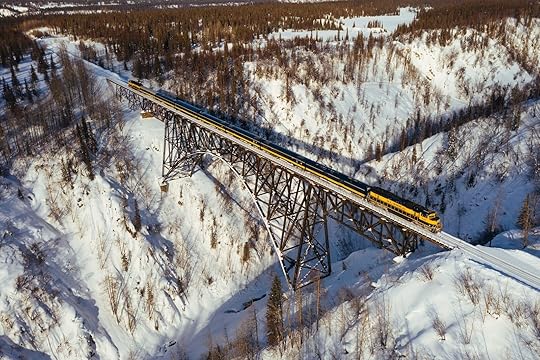 Photo courtesy of Alaska Railroad
Photo courtesy of Alaska Railroad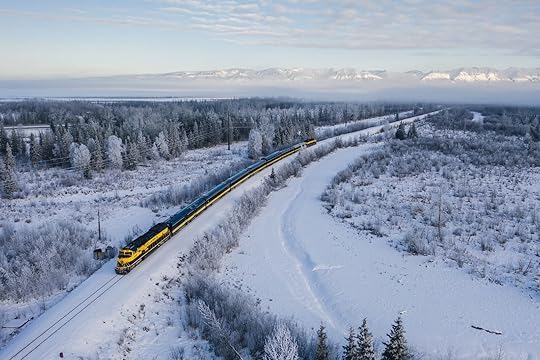 Photo courtesy of Alaska Railroad
Photo courtesy of Alaska Railroad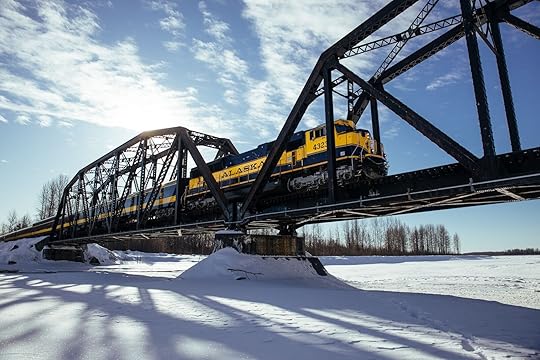 Photo courtesy of Alaska Railroad
Photo courtesy of Alaska RailroadWhile the train itself is lovely, the real appeal is what’s going on out the window. On the way, you can spot Mount Denali, North America’s highest peak, as well as wildlife like caribous and moose, and the northern lights if a magnetic storm aligns with your trip.
The best way to see the northern lights on this trip, however, is to get off the train at one of the stops and stay overnight. The areas where the Aurora Winter Train stops at are not only close to the magnetic pole and therefore more likely to be blessed with the spectacle of the aurora borealis, but they are also so remote that there’s next to no light pollution to get in the way of the celestial show.
@sdtravels Alaska winter trip Part 3: Aurora Winter Train #alaska #alaskarailroad #fairbanks #anchorage #train #aurorawintertrain #travel #traveltiktok #bucketlist #fyp #caribou #reindeer ♬ original sound – darcy stokes
Riding the Aurora Winter Train both ways is a big commitment so the Alaska Railroad offers a variety of packages that allow you to take the train one way, fly back, and do something fun in between, like dog sledding, aurora chasing, and more.
While traveling to Alaska in the winter might once have been for eccentric and adventurous travelers only, it’s not the case any longer — the Aurora Winter Train is becoming more and more popular. “During the 2023-2024 winter season, the Alaska Railroad saw a nearly 13 percent increase from the previous season in ridership,” a recent press release explains. Even more surprising is the fact that “March 2024 saw more passengers than the entire 2011 winter season and seasons prior”. So, if you’re keen to travel by train around Alaska in winter, don’t wait until all the seats on the Aurora Winter Train are booked up. A one-way trip costs around $225 while a return trip will set you back less than $500. 
Whoops — China Confirms Its Largest Waterfall Isn’t so Natural
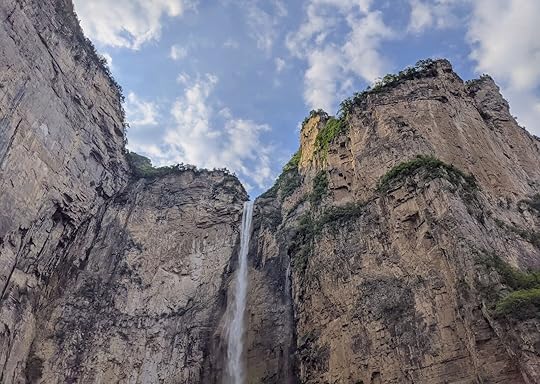
While many national parks are no stranger to drought, some social media users think one protected recreation area in China took it a little too far.
On June 2, a social media user in China posted a video on Douyin (similar to TikTok). The video showed a somewhat large pipe feeding water out from the top of Yuntai Falls, at tourist hot-spot Yuntai Geopark. The caption translated to “After going to all the effort to see the Yuntai Falls, I saw a water pipe.”
It didn’t take long for the video to go viral, as Yuntai Falls is supposedly the largest natural waterfall in China. Hours after the video was posted, the park responded — and admitted the waterfall wasn’t all natural. It posted a semi-strange message, seemingly written from the perspective of the waterfall, acknowledging a “small improvement.”
“I made a small improvement during the dry season, just to be able to meet my friends in a better state,” reads the translated note. “In the coming flood season, I will present my magnificence in the most perfect and original manner.”

Photo: Yuntaishan Scenic Area/Google Translate
Yuntai Falls, also called Yuntai Mountain Waterfall is in China’s Henan Province and supposedly the tallest waterfall in China. It drops 1,030 feet, or 314 meters, over a cliff within Yuntaishan Global Geopark, also called Yuntai Mountain Geo Park.
The use of a pipe to feed the waterfall could be considered at odds with the definition of a geopark, a designation given to destinations around the world by UNESCO. A geopark must have a “landscapes of international geological significance” and be “managed with a holistic concept of protection, education and sustainable development,” reads the UNESCO website. “Their bottom-up approach of combining conservation with sustainable development while involving local communities is becoming increasingly popular.”
The geopark received more than 11 million visitors in 2019, and Yuntai Falls is the centerpiece of the park, designated as a scenic area within China. It’s not the first time the park has been in the news for the wrong reasons: The park’s glass walkway, perched 3,500 feet above a canyon, cracked while visitor were walking across it. The park blamed the cracks on a stainless steel mug dropped by a visitor, and it was quickly repaired. The glass walkway is still open for guests.
Other impressive waterfalls in China
Detian Waterfall, on the China-Vietnam border. Photo: French Jessica Lee/Shutterstock
If you’re ready to go chasing waterfalls, but prefer to see them in their natural state, you have plenty of options besides Yuntai Falls. The country has lots of excellent national recreation areas, many of which are loaded with waterfalls. The options below are just the tip of the iceberg.
Huangguoshu Waterfall (also called Huangguoshu or Huangguoshu Falls) is one of the largest waterfalls, width-wise. It’s 255 feet tall and 331 feet wide, with several cascades. The name translates to “Yellow Fruit Tree Waterfall,” and it has multiple viewpoints for visitors, including a mist-filled cave in the rock behind the falls.Detian Waterfalls is a collection of cascading waterfalls that straddle the border between China and Vietnam. They’re the largest waterfalls on the China-Vietnam border and are more than 700 feet wide and surrounded by dramatic karst formations. Most visitors see the falls from boat rides, though both countries have available viewing platforms. In Vietnam, they’re called Ban Gioc Falls.Jiulong Waterfalls is also called the Nine Dragon Waterfalls for its multiple tiers of cascades spread out over a one-mile section of river. The largest is more than 350 feet wide and 150 feet tall. It’s a popular spot on multi-day tours, though the park’s infrastructure makes it easy to visit on your own, too. More like thisNational ParksThe 20 Most Instagrammed Waterfalls in the World
More like thisNational ParksThe 20 Most Instagrammed Waterfalls in the World
How to Take a Family Trip to Ocho Rios, Jamaica, Filled With Nature, Adventure, and Culture
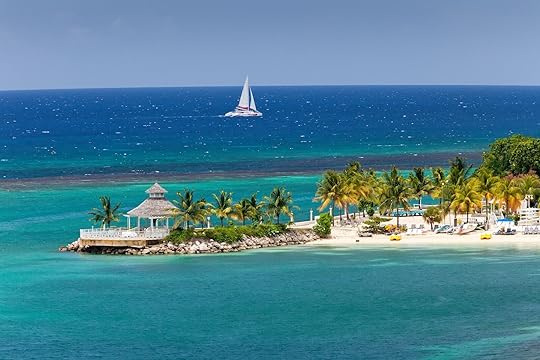
Denver was hit with a late spring snow dump the day before my wife, Heather, and 18-month old daughter, Margot, landed home after an eight-day trip to Jamaica. The baby got our light jackets as we waited for our Uber driver, who made a joke about not being prepared for spring in Denver.
His joke immediately shifted to excitement when we mentioned we had just taken a family trip to Jamaica — a place he loved for the similarities in the food and music to Guinea, where he was raised. He said he had picked up many young, post-vacation families over the years, but not many who had taken the whole household to Jamaica.
For us, that seemed surprising. After many family trips around the world as our toddler approaches 20 flights before two, Jamaica proved to be one of the most family-friendly places we’ve been.
It was my second trip to the island. My first, an early fall solo trip based in Kingston for Jamaica’s 60th Independence Day celebrations, immediately made me want to come back. Particularly to Ocho Rios, where my local guide took the time to explain just how much my yet-to-be-born daughter would love to visit.
It’s safe to say she was right. It’s where Margot fell in love with sand and warm ocean water, took her first steps while listening to a steel drum player, and got her first taste of jerk. When she gets older, I know we’ll be back to experience (or reexperience) more of the activities that make Ocho Rios such a great place for a family vacation.
Family-friendly things to do in Ocho Rios

Photo: Nickolaus Hines
The beach is of course always nearby in Ocho Rios. Calm shallow water, soft sand, and numerous water adventures from catamaran cruises to snorkeling and scuba diving bookable through the resorts are enough to keep any family entertained for days. But there’s also so much more to do.
Walk the townRegardless of whether you’re staying at a resort or in a stunning Jamaica Airbnb, you’ll want to get out and see the small, walkable town of Ocho Rios. On the side where cruise ships dock, you’ll find Island Village. High-end retail shops, souvenir stores, tour companies, and restaurants surround a central courtyard. It’s the meeting point for the Caribbean’s biggest tour operator, Chukka, and also where you’ll find Margaritaville Ocho Rios in Island Village complete with a 60-foot waterslide.
Head to the eastern part of town to escape the bulk of tourists. A short walk leads to local-favorite restaurants like Ben’s Jerk Pit and Miss T’s Kitchen where you can try classic Jamaican food staples from seafood to jerk to oxtail cooked to perfection. Small shops sell clothes and souvenirs, and market stalls are filled with fresh fruit (seek out a coconut and a piece of cut up sugarcane from one of the Rasta vendors) and spices (here’s how to make sure your spices taste just as good when you get home).
Dunn’s River Falls
Photo: Left, CO Leong/Shutterstock; right, Nickolaus Hines
Hours: 8:30 AM to 4 PM every day
Entry cost: $25 per person
This is one of the most popular stops in Jamaica for anyone visiting the island, and it’s worth the hype. Dunn’s River Falls is defined by the 960 feet of river complete with natural waterfalls and pools that end in the sea — one of the few island rivers that empty directly into the Caribbean. Guides take groups on a walk right through the river to soak and let the falls hit your back. While there’s an established route to follow, it can get slippery and it’s best for kids who already have sure footing (and water shoes).
A full day can be built around going to Dunn’s River. In addition to the falls, there’s a small waterpark and splash pad for kids of all ages, the white-sand Dunn’s River Beach that’s saddled by the Caribbean and the river, and a zipline course that sends riders over the people walking the falls below.
Dunn’s River Falls: Follow the main road out of Ocho Rios west for a couple of miles. A short drive later, you’ll spot signs for Dunn’s River Falls. Alternatively, you can book with an outfitter like Chukka.
Turtle River GardensHours: Monday through Saturday, 9 AM to 4 PM
Entry cost: $20 for adults, $10 for kids
The Turtle River runs through this 15-acre tropical garden, with 14 waterfalls on the property. It’s more than a waterfall destination, though the viewing platforms over the river make it easy to walk the grounds and take rest stops to view the indigenous and endangered plants for the entire day. There’s also a 15,400-square-foot, walk-in aviary with tropical and endemic birds; butterfly house; koi pond; great lawn; and tour guides who can explain the levels of the rainforest and all that call it home. Bring food to make a day of it.
Turtle River Falls and Gardens: CV3Q+8XG, Eden Bower Rd, Ocho Rios, Jamaica
Make Jamaican chocolate with Pure Chocolate@foodwtf Making #chocolate from scratch atPure Chocolate Company in #OchoRios #Jamaica #foodtiktok #cookingclass #chocolatemaking ♬ Little Things – Adrian Berenguer
Hours: Monday through Saturday, 9 AM to 5 PM (chocolate classes on Saturdays)
Chocolate class cost: $50 per person
Jamaica-born Rennae Johnson and her business partner husband Wouter Tjeertes opened Pure Chocolate Company in 2017 to highlight local cocoa that’s hand-dried on the island, with labels designed by Jamaican artists. The Island Village shop is worth a visit for any chocolate lover. It’s also where you can take a chocolate making class to learn the process and create flavors that match your tastes, whether that’s chocolate topped with candied fruit, nuts, or spices.
Pure Chocolate Company: Island Village
Mystic MountainView this post on InstagramA post shared by Mystic Mountain Ja (@mysticmountainjamaica)
Hours: Sunday through Thursday, 8:30 AM to 5 PM
Cost: $59 and up, depending on activities
A 3,280-foot tracked bobsled through the rainforest has long been the draw to Mystic Mountain for thrill seekers and anyone familiar with Jamaica’s Olympic bobsled history (or who just really enjoyed Cool Runnings). It’s reached by the Rainforest SkyExplorer chairlift — a ride in itself as it takes people 700 feet up through the tree canopy. There’s also ziplining through the trees.
Mystic Mountain: Drive west on the main road from Ocho Rios. Mystic Mountain is located between the town and Dunn’s River Falls.
Konoko Falls and Mini Zoo
Photo: DosanJones/Shutterstock
Hours: 8:30 AM to 4:30 PM every day
Cost: $20 for adults, $10 for kids 3 to 12, free for children under 3
Take a short drive inland from the town center to find the botanical gardens, climbable waterfalls, and zoo on the Konoko Falls property. You can make your own itinerary or take a guided tour to learn more about the birds and animals that call the area home as well as the indigenous Taino people who lived on the island before European colonization. The zoo portion is filled with exotic birds and endemic species, as well as mammals and reptiles. Step inside the small museum to get out of the heat after exploring the flora along the clear river.
Konoko Falls and Mini Zoo: 9VWV+QQ8, Ocho Rios, Jamaica
When to visit Ocho Rios with familyJamaica is tropical, and there’s no cold season to speak of. There is, however, a peak season: December to April, when the weather isn’t quite as hot and the sun regularly shines all day. The rainy seasons run from May to June and September to November, and hurricanes pass through in June to November.
Much of the tourism infrastructure, from hotels to activities, remains open year-round. While the weather may be better in winter, that’s also when you’ll find higher accommodation prices and bigger crowds.
Where to stay for a family trip to Ocho RiosWe stayed at Moon Palace, an expansive all-inclusive resort with kid-friendly amenities like a sizeable splash pad, waterslides, private beach, and a wealth of restaurants. It’s hands-down the most family oriented resort we’ve stayed at, and had just as much entertainment for the adults as for the little ones.
Other resorts that center around family travel in Ocho Rios include RIU Ocho Rios, Sandals Dunn’s River, and Beaches Ocho Rios.
How to get to Ocho RiosJamaica’s two main airports are in Montego Bay and Kingston. Both have many direct international flights and are about an hour to two hours away from Ocho Rios. We flew into Montego Bay, and our resort had a free bus transfer to and from Ocho Rios.
Travelers can also land closer to town at Ian Fleming International Airport, which is a short drive from Ocho Rios. Jamaica’s smallest international airport, direct flights on American Airlines regularly come in from Boston, New York City, Philadelphia, Atlanta, Nashville, Charlotte, and multiple airports in Texas and Florida. 
Norway’s Newest Thrill: Terrifying Rope Ladder Offers Breathtaking Views 790 Meters Above a Fjord

Visitors can now enjoy one of the best views in Norway, but first, they’ll have to climb a ladder dangling some 790 meters above a fjord. The new attraction is called Stigull and is part of Europe’s longest Via Ferrata bridge, located in the small village of Loen in the Stryn Municipality in Vestland County, Norway.
The ladder measures 40 meters long and has 120 steps spaced at regular intervals. Unlike a traditional vertical rope ladder, the Stigull is built on a 45-degree incline, making it more akin to a long, narrow staircase scaling the mountain at a steep angle. This design provides a secure and stable climbing surface while offering a significant challenge due to the terrifying height and exposure. To reach this vantage point, you must ascend the initial “Route 2” section on foot. At the base of Stigull, you’re already 790 meters above sea level before you climb the ladder towards the peak of Mount Hoven.

Photo: Loen Active/Kjersti Kvamme
Once you get to the top, you’ll be able to see the expanse of Nordfjord, the Jostedalsbreen glacier, Mount Skåla, Lake Lovatnet, the village of Olden, and the town of Stryn.
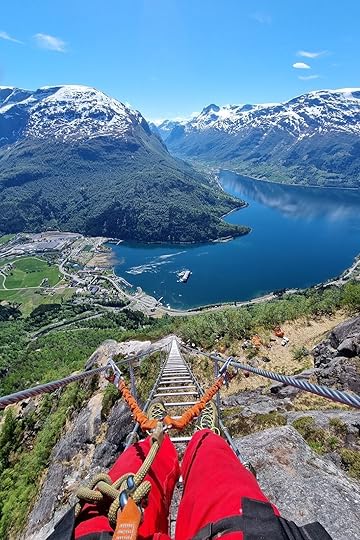
Photo: Loen Active/Joachim Neumayr
On Mount Hoven you can enjoy panoramic dining at the Hoven Restaurant before jumping on the famous Loen Skylift on the five-minute ride to the bottom.

Photo: Loen Skylift/Marius Beck Dahle
The Loen Skylift is one of the world’s steepest cable cars and ascends Mount Hoven at a dramatic 60-degree incline to the 1,011-meter summit.
Summer and winter activities in Loen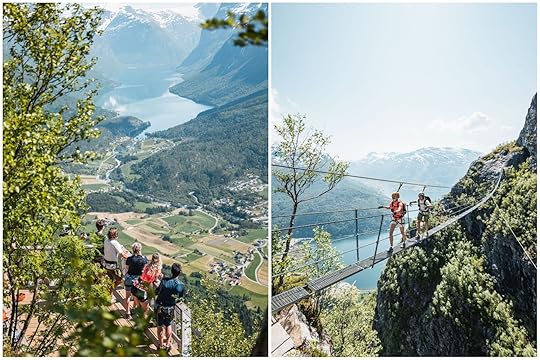
Photo: Loen Active/Simon Sjökvist
In summer and winter, Loen is an outdoor playground for sports enthusiasts catering to thrill-seekers and those who prefer a more leisurely pace. Most guided activities are run by Loen Active. They can also help you plan your adventures and provide gear.
You can rent SUP boards or kayaks and explore the calm waters of the fjord surrounded by mountains. Enjoy a variety of biking, hiking, and walking paths, from easy to more challenging full-day routes. Each offers stunning views of Jostedalsbreen National Park and the fjord landscape.
 Photo: Loen Active/Simon Sjokvist
Photo: Loen Active/Simon Sjokvist Photo: Loen Active/Simon Sjokvist
Photo: Loen Active/Simon Sjokvist Photo: Loen Active/Simon Sjokvist
Photo: Loen Active/Simon Sjokvist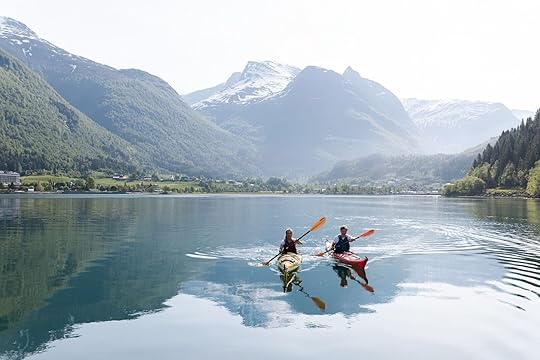 Photo: Loen Active/Marius Beck Dahle
Photo: Loen Active/Marius Beck DahleOr, if you’re looking for a challenge, Via Ferrata Loen provides an unforgettable experience. The fixed-cable climbing route traverses the cliffs high above the fjord, offering panoramic views. Guided tours are available and include all necessary equipment and safety measures. There’s also a zip line ride across the valley where you’ll soar through the air at high speed while taking in the incredible views — if you have your eyes open.

Photo: Visit Nordfjord/Dag Ulvedal
During the winter months, which typically last from November to April or May, Loen transforms into a winter wonderland. Visiting in the colder months allows you to enjoy various snow activities amidst the stunning fjord scenery.
Winter walking trails are suitable for various fitness levels and offer a chance to immerse yourself in the peaceful tranquility of the snow-covered mountains. Consider hiring a guide for a more personalized experience, especially if you’re new to winter walking. Loen Active provides rentals for winter gear, such as gloves, ski goggles, poles, boots, etc.
If you want to get your heart rate elevated — or just laugh with the family — you can sled down Norway’s longest toboggan or join a ski tour, which offers a chance to explore the vast off-piste terrain.
After a day of winter sports, you can rest inside Loen’s beautiful man-made snow cave. The entrance to the cave is a narrow passage that leads into a larger, dome-shaped chamber. It’s located around 300 meters from the skylift station. 
Best of Both Worlds: 4 Super Cool Towns a Short Drive From Astounding Nature

In 370 miles, you can get pretty deep into the wild. That’s Los Angeles to Yosemite, Salt Lake City to Yellowstone, Memphis to the Gulf of Mexico. It’s also the EPA-estimated hybrid driving range of the 2024 Jeep® Wrangler 4xe. Those epic journeys into nature can be done all on one charge + tank.
But what if you only needed a fraction of that distance? From the four small cities below, astounding nature is just minutes away from in-town delights, and that 370-mile range means hours or even days of nonstop adventure. Put yourself in one of these spots — and in a Wrangler 4xe — to enjoy the best of both worlds.
BUILD YOUR WRANGLER 4xe for the ultimate city-to-nature road trip.
1. Tucson, AZ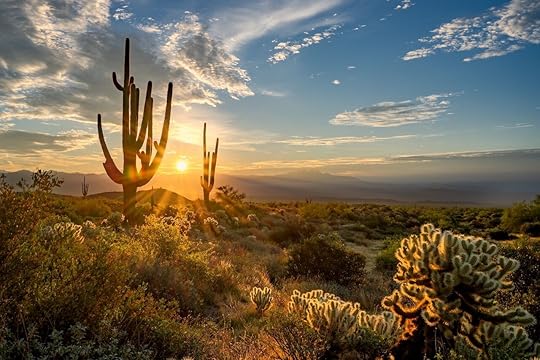
Photo: 86Eric_Anthony_Mischke 86/Shutterstock
Name two US cities that split a national park. You can’t, because there’s only one: Tucson, Arizona. Flanked to the east and west by Saguaro National Park, Tucson offers classic Southwest desert scenes — the saguaro is that iconic, arms-waving cactus that can grow up to 60 feet tall. The city sits in the heart of the Sonoran Desert, with five nearby mountain ranges ready for a little open-air, 4WD exploration.
After you’ve got your national park stamp, scout out spots like Sabino Canyon Recreation Area, Catalina State Park, Madera Canyon, and Redington Pass. All provide surprisingly lush desert scenes — even waterfalls are possible, as on Sabino Canyon’s Seven Falls Trail.
Eventually, you’ll need to charge back up. For your 4xe, the city has nearly 100 charging stations; for you, Tucson is the United States’ first UNESCO City of Gastronomy. El Charro Café, the oldest Mexican restaurant in the US and the birthplace of the chimichanga, is the obvious spot for gaining a deeper appreciation for this part of the country.
Tip: Tucson houses the headquarters of Dark Sky International. Come nightfall, drive the 27-mile Sky Island Parkway National Scenic Byway to the Mt. Lemmon SkyCenter Observatory — at the summit of Mt. Lemmon, some 9,150 feet high — to gaze at the cosmos through the region’s largest telescopes.
2. Bremerton, WA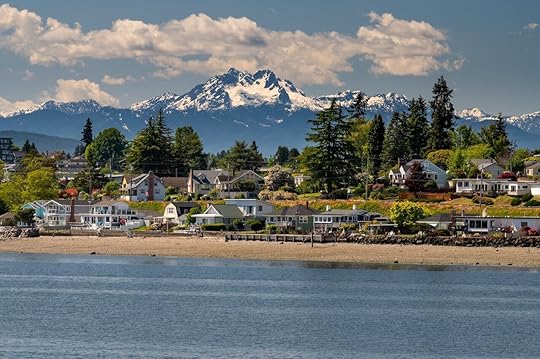
Photo: Cavan-Images/Shutterstock
Across from Seattle lies the “natural side” of the Puget Sound: the Kitsap Peninsula. Bremerton — population 45,000 — is the peninsula’s largest city, a naval town with an artistic, gritty flair that’s halfway between Olympic and Mount Rainier national parks. While tourists flock to these well-known destinations, Kitsap sits quietly in the spotlight’s shadow. And in-the-know travelers rejoice.
By morning, hit up one of Bremerton’s three main drags — on either side of the Manette Bridge, plus the Charleston neighborhood — for your caffeine of choice. From there, head out to hike up Green Mountain, wander the sands of the wonderfully named Point No Point looking for orcas, or paddle the Kitsap Peninsula National Water Trails. You might want to save that last one for nightfall, though — the peninsula’s waters glow with bioluminescence in summer.
For adventures farther afield (but still well within 370 miles), visit either of the aforementioned national parks, or point your GPS somewhere less crowded like the Olympic National Forest. If you’re up for some gravel, make the off-road trek to the High Steel Bridge, the tallest railroad bridge in the country — it’s an epic backcountry scene over the wild Skokomish River. The potholes will outnumber the humans, but with the 4xe’s 10.8-inch ground clearance, that’s a worthwhile trade.
3. Grand Marais, MN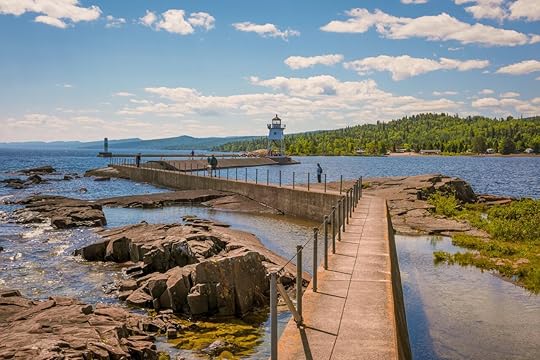
Photo: Craig Hinton/Shutterstock
Even farther north than Duluth — about two hours farther north — Grand Marais anchors Minnesota’s wild and spectacular North Shore. Just getting here requires trekking up Lake Superior’s rolling western coast, where ancient volcanic cliffs and boreal forests tumble into America’s largest lake.
The Grand Marais Art Colony has set the vibe here, birthing the town’s clutch of art galleries and studios. Stretch your legs by perusing the shops, grab a bite at classic spots like the Angry Trout or Fisherman’s Daughter, and wander toward the lakeshore. Then head out to Artists Point for a quick hit of Lake Superior, or tackle a section of the 310-mile Superior Hiking Trail that spans the entirety of the North Shore.
But before you commit to an on-foot journey, know that one of Grand Marais’ best adventures happens back on four wheels: the 57-mile Gunflint Trail, a paved scenic byway that leads from Grand Marais to the Boundary Waters Canoe Area Wilderness. The occasional lodge and restaurant dot the route, but this is one of the country’s last great wilds — you’ll pass bodies of water so solitary the call of the loon will be your only companion.
Tip: Even with the top down and the wind in your hair, your Jeep Wrangler 4xe can still transport those kayaks with a hitch-mount rack. (Talk about best of both worlds.)
4. Terlingua, TX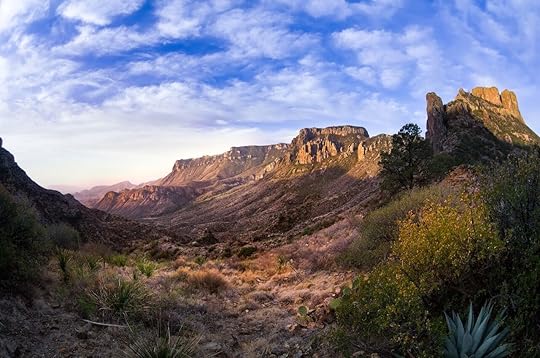
Photo: Dean Fikar/Shutterstock
Terlingua’s “downtown” is called Terlingua Ghost Town — that’s its actual name. The Chisos Mining Company was established here in 1903, and, well, you can guess how the story goes from there. But it’s the 21st century now, and Terlingua is vibrant once again, a ghost town resurrected.
In the evenings, folks clamor on the porch outside the Terlingua Trading Company (a general store located in the original trading post building) and the legendary Starlight Theatre (where you can score Texas eats in an old movie palace). They sit and chat, sure, but it’s all about the view: the Chisos Mountains, Mule Ears Peaks, Big Bend State Ranch Park, and Big Bend National Park string out across the desert horizon. While your 4xe charges — yes, there are two charging stations in this “ghost town” — your job is to simply take it all in.
Once you’ve had your fill of town, it’s time get a closer look. Hit the road and you’ll find lush riparian zones along the Rio Grande and its tributaries, yucca-splashed scenes in the Chihuahuan Desert, and even alpine landscapes, box canyons, and ranch ruins in the Chisos Mountains. Set out on Big Bend National Park’s Ross Maxwell Scenic Drive and follow it all the way to the majestic Santa Elena Canyon. Like Terlingua, that’s the end of the road — with the Jeep Wrangler 4xe, just the beginning. 
June 5, 2024
This Generic, ‘normcore’ Brand Makes the Best Travel Clothing
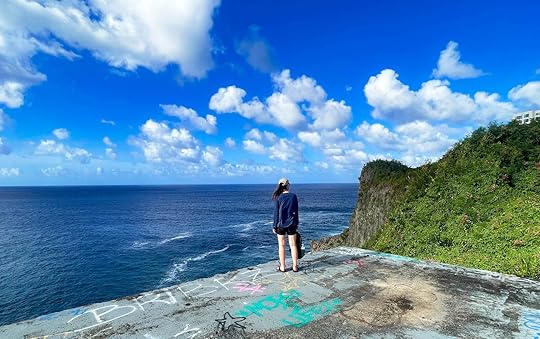
I’ll just cut to the chase: I travel at least once a month, usually to outdoorsy destinations, and I’ve found that a huge chunk of my wardrobe comes from one brand. All its clothing is super-soft, hardly wrinkles, has modern and clean lines, and is well-suited to everything from sleeping on airplanes to walking around cities to multi-day backpacking trips. And it has built-in UPF protection, so I don’t have to worry about getting sunburned when outdoors all day.
If you’ve been on Instagram recently, you’ve probably seen advertisements for what has become my favorite brand: Free Fly Apparel. I hate impractical clothing, and can be picky with comfort and cut, but the brand absolutely makes the best travel clothing on the planet. It’s become my favorite clothing brand not just for travel, but for almost everything, including running errands, hiking and camping, and hanging with friends. If an activity doesn’t require formal dress, I’m probably wearing Free Fly Apparel.

Airport shot to prove this is the best travel clothing: Free Fly Breeze Jogger, Bamboo Shade Long Sleeve, and Gridback Fleece Jacket. Photo: Suzie Dundas
I know what you’re thinking: but Free Fly probably paid Matador Network to say that. But nope! In fact, I’ve been wearing Free Fly Apparel clothing for the better part of three years, and I’ve worn the brand’s pants, tees, hoodies, shorts, and even outerwear. I’ve also recommended them to at least half a dozen people, including fellow scuba divers who love the built-in sun protection, a doctor friend traveling to sub-Saharan Africa to teach at rural hospitals, and even my 70-year-old mother-in-law, who wanted comfortable clothing that didn’t have itchy tags. In the past, the brand has sent me a few items of clothing for testing for various articles. But most of it I’ve purchased myself.
Free Fly Apparel has allowed me to get more wear out of fewer items of clothing, stress less about packing for vacations, and not worry about whether my outfit matches, since everything pretty much matches everything else. Here’s the full list of what I have. At this point, it’s almost a complete wardrobe.
GridBack Fleece JacketBreeze Pull-on Jogger Pant (two)Lightweight Fleece Jogger PantBamboo Lightweight Hoodie (two)Bamboo Shade Hoodie (two)Bamboo Lightweight Long Sleeve (two)Latitude ShortPull-on Breeze ShortBamboo-lined Breeze Short (4″ inseam)Bamboo Lightweight Fleece Crewneck Pullover(I may be about half the reason this brand is still in business).
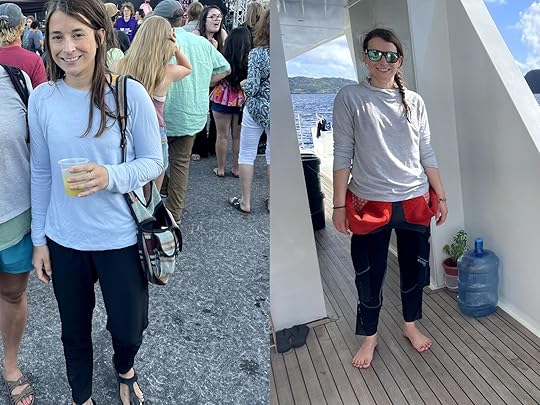
At a festival, and over a wetsuit on a scuba diving boat. Photo: Suzie Dundas
And if you’re wondering: if you buy anything below, Matador may get a small commission — that’s one of the ways we keep all of our content free and open to everyone, rather than using a paywall. But I wouldn’t spend three years wearing clothing (or have nearly a dozen pieces from a brand) if I didn’t really like it. Listed prices are accurate as of the time of publication. You can skip the sunscreen, as most items have UPF protection

The fact that I don’t need to lather sunscreen on my skin while sightseeing is one of many reasons I think the brand makes the best travel clothing for outdoorsy types. Photo: Suzie Dundas
I have a dresser drawer full of various outdoor shirts, pants, and shorts, but more and more, I find myself gravitating to Free Fly clothing for outdoor adventures. That’s because nearly all the brand’s clothing has UV protection in the fabric, giving you the sun protection of a cream sunblock without smearing chemicals on your skin. (When you do you use sunblock, here are some great picks that are way better for your skin and the environment).
I wear Free Fly sun hoodies all the time on scuba diving boats and after river floats and kayak trips, as well as any other time I’m wet and need immediate sun protection. The sun hoodies are for warm weather, and options like the Bamboo Lightweight Hoodie II are extremely lightweight, so I get sun protection without overheating. The hoodies are especially nice for this purpose as they keep sun off your neck and face.
The brand has a super-useful hoodie comparison tool to help you figure out which of the many options may be best for you.
Buy Now: Men’s SPF Hoodies ($68+)Buy Now: Women’s SPF Hoodies ($68+)The brand’s travel pants barely wrinkle
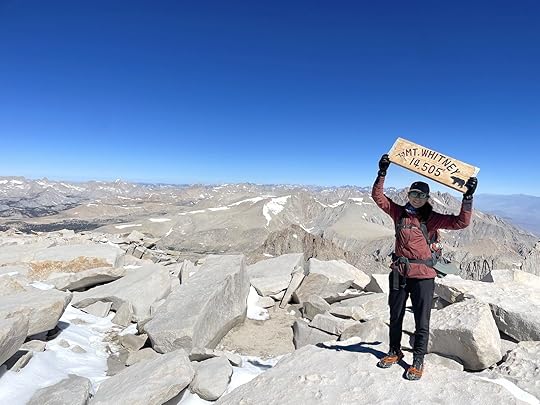
After hiking 12 miles and 6,000 feet of gain, my pants are windblown — but not wrinkled. Photo: Suzie Dundas
The Free Fly Apparel Breeze Pant is one of the best travel clothing purchases I’ve ever made, especially at the price point (around $90). It may be a bit steep for a pant, but considering how much I wear them (like, 50 percent of the time), I figure it probably evens out. Comparable pants like those from Lululemon or PrAna are pricier, and while they’re also quite nice and comfortable, don’t have all the other benefits.
The Breeze Pants are why I think Free Fly Apparel makes the best travel clothes. Elastic waists, straight lines that look professional, soft fabric, and enough wrinkle-resistance that I can ball them up in my luggage for a week before I wear them again with zero wrinkle issues. In my experience, this is also the case with the brand’s t-shirts and hoodies, of which I also have half a dozen.
Bonus: being wrinkle-free also makes you look more stylish and put-together without having to make any actual effort. Score.
Buy Now: Women’s Breeze Pull-on Jogger ($94)Buy Now: Men’s Breeze Pant ($94)Clothing is made with sustainable and soft bamboo

Hiking in Free Fly Breeze shorts, avoiding the sun in a Free Fly long-sleeve, and socializing in a lightweight hoodie. Photo: Suzie Dundas
Free Fly’s clothing is made with organic bamboo fibers, rather than cotton (a not-very-sustainable fabric) or synthetic materials. Bamboo is generally a more eco-friendly fabric, as it grows fast and has a shorter life cycle, so it requires less land and resources to grow. Compared to conventional cotton, it uses much less water, and has a natural pest resistance, requiring less human intervention on the crop. And when it comes to the final product, bamboo fabrics are super soft. And it goes without saying that the best travel clothing needs to be soft enough to sleep in.
It’s also important that it’s organic bamboo, as the processing required for non-organic bamboo can use harsh chemicals. Free Fly has a code of conduct it enforces at its factories, ensuring it supports manufacturers that pay fair wages, ensure overtime, track environment impacts, and more.
Obviously, the most eco-friendly approach is buying high-quality, long-lasting clothing, regardless of the material. While the thinner hoodies aren’t going to last as long as, say, a Pendleton blanket or Burberry jacket, I’ve been wearing mine for a few years, and the most I’ve had to do is restitch a thumb loop I got caught on a door handle.
It won’t go out of style anytime soon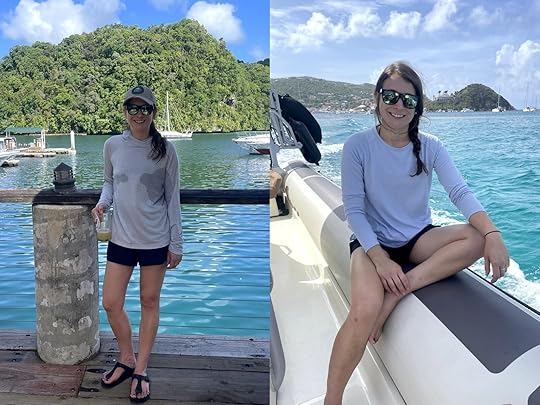
Straight cuts and solid colors mean Free Fly’s style is subject to fads or fashion whims. Photo: Suzie Dundas
Fashion: it’s a thing I hear some people care about. Fortunately, all the Free Fly items I own are straight cuts and clean lines. It all has a classic, straightforward look, so it never looks dated or overly trendy.
Nothing is designed to be tight, fitted, or sexy, and I have friends who are curvier than me, shorter than me, and larger than me, who all also love the brand. Because everything is meant to have a loose, casual look, it doesn’t look weird if you size up to accommodate a larger chest or hips, or if you buy a style marketed to the opposite gender. Most of the men’s and women’s designs looks pretty similar, anyway.
In my experience, the sizing is very straightforward. I’m 5’7″ and a size US women’s 4/6, with a long torso and short legs. In Free Fly Apparel, I usually wear a small in bottoms (my normal size) and a small or medium in the tops (also my normal sizes). Some tops run a little small, but the website lists how each item fits. And my go-to airplane jacket (the Gridback Fleece Jacket) runs a little big.
Free Fly also has a solid return policy, as returns and exchanges anywhere in the US are free within 30 days. So it’s not dire if you need to make a size swap.
Buy Now: UPF 50 Long-Sleeve T-shirts ($58+)
Dress it all up or down
House party-ready. Photo: Suzie Dundas
The best travel clothes need to be not just comfortable, but also versatile. Guys can wear the same thing to a wider range of occasions than women and still be dress-code appropriate, but that’s not always the case with women’s apparel. That sometimes means ladies end up needing to pack more during travel, but that’s not a problem when I rely on Free Fly Apparel clothing.
I’ve found that I can pack fewer items and wear them more often, while still feeling vaguely appropriate for most occasions. Sure, I don’t go to the opera while traveling, but I could wear it to a nicer restaurant and not stand out. The Breeze Pant with the long sleeve Fleece Crewneck Pullover, plus a few pieces of jewelry (easy to pack!) and a pair of heeled boots looks nice enough for most evenings out, even if it’s the exact same thing I slept in on the airplane.
No branding or marketing BS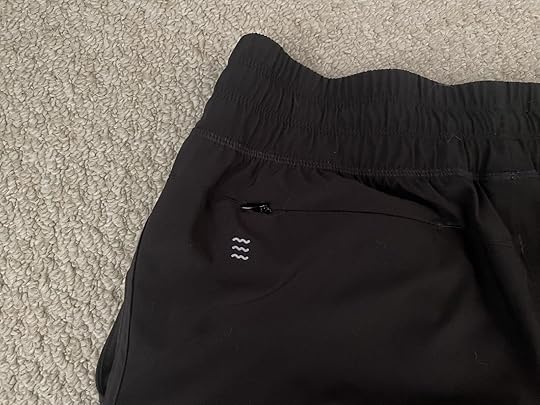
This is the extent of the branding – a dime-sized, no-name logo. Photo: Suzie Dundas
There’s a long list of things many clothing brands do that I simply hate — putting huge logos on everything, marketing something as unisex but designing it mostly for men, or using super unrealistically thin models that make it impossible to gauge how clothing looks on the average consumer.
Free Fly doesn’t really do any of that, which makes me happier to support the brand. The branding is minimal or non-existent and the “models” look like real people wearing the clothing in appropriate settings. It focuses on clothing for men and women, without one gender being an afterthought. And since it’s not flashy or overly stylized, everything matches everything else, so I don’t really need to plan “outfits.” I just throw a few tops and a few bottoms in my luggage, and I’m good to go.
It’s all quick-dry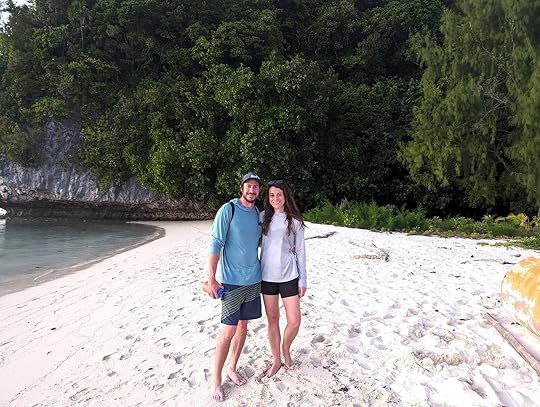
Wearing Free Fly sun hoodies (and shorts, for me) in Palau. You can see the moisture evaporating off my shirt. Photo: Suzie Dundas
Free Fly Apparel was first launches as a clothing brand for people who spend time on the water — fishers, kayakers, and such. When I go on scuba diving or beach trips, Free Fly Apparel clothing is usually about 70 percent of what I bring with me. The brand’s shirts dry quickly even when thrown on over wet swimsuits, which keeps me warmer if it starts getting breezy on the water. Quick-drying shirts are also important to me as I have long hair, and I hate when the back of my shirt is soaked all day from my wet hair dripping over my shoulders.
In the photo above, I’m also wearing the Women’s Bamboo-Lined Breeze Short, made from a poly/spandex blend. I think most people can agree that having a soggy butt all day after getting out of the water kind of sucks, but because these dry so quickly, I can throw them on over my swimsuit with no problems. And they’re light and loose, so they’re easy to pull on (and comfortable to wear) even if I’m soaking wet — unlike a tight pair of jean shorts that will be wet for hours. That makes these perfect for travel, since they don’t take up much room in my bag and let me go from beach to sightseeing when I’m out all day, even if there’s no where to change or dry off.
Buy Now: Women’s Lined Breeze Short ($68)Buy Now: Men’s Breeze Short ($44+)I think it’s the best travel clothing, but there are a few things that could be better
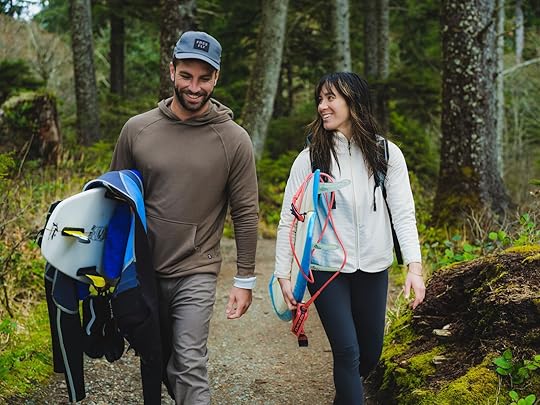
Though the brand fits up to a women’s size 20, the models and photos are not particularly size-inclusive. Photo: Free Fly Apparel
I really do like all my items from Free Fly Apparel, and wish a lot more brands would go in the direction of non-branded, useful, mix-and-match clothing. It’s the best travel clothing I own, and I always feel adventure-ready, even if I pack light.
But I’ll admit it has some downsides. Free Fly Apparel isn’t super size-inclusive, with only a few women’s items available in plus sizes. For women, only 32 of 98 items come in XXL, which fits in the US women’s size 18 to 20. For men, it’s a bit better, with 35 of 110 men’s products available in a 3X, likely to fit up to a 44- to 46-inch waist.
That is better than a lot of brands, but it’d be great to see more inclusive sizing (and more diverse models). I also wish it had a stronger stance on environmental responsibility, as it’s not a 1% for the Planet, and the sustainability page on the website still touts a program to launch a more sustainable shipping package…in 2022. By nature of using bamboo, the clothing is a lot more sustainable. But considering how detrimental clothing production is on the planet, the more a brand can do, the better.
(On that note: if you are into thrifting or avoiding buying products with new materials, I’ve found a few Free Fly Apparel items on used clothing retailer Poshmark. But you can’t make exchanges or returns, so make sure the size is correct before you buy anything.)
One other thing worth nothing: While I don’t consider it a downside, most of Free Fly Apparel’s best travel clothing is lightweight and thin, which means treating it with a little extra care will extend its lifespan. You can throw everything in the laundry if you want, but washing it on a gentle cycling and hanging it to dry, rather than using a dryer, will make the fabric and its SPF protection last a lot longer. 
A Rotterdam ‘Floating City Tour’ Showcases the Coolest Climate-Resilient Architecture

Rotterdam, a city vulnerable to rising sea levels and limited land, is pioneering floating infrastructure as a solution. The Netherlands’ second-largest city, home to some 600,000 residents, is the world’s most striking example of what a city can be in an era of both rapid technological development and climate change. It’s known for forward-thinking architecture like the upside-down-U-shaped Market Hall apartment and commercial complex and the Luchtsingel elevated park. But the most innovative development in Rotterdam happens on the water – a resource in which the city has in abundance. Travelers to the city can now see this innovation firsthand via a new “Rotterdam Floating City Tour” from De Rotterdam Tours.
How Rotterdam is using floating infrastructure to develop climate resilience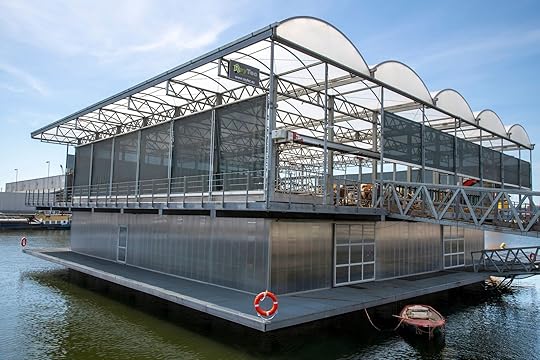
Floating dairy farm. Photo: 365 Focus Photography/Shutterstock
Rotterdam as it existed before World War II was leveled by the Luftwaffe in 1940, the victim of heavy aerial bombardment during the German invasion of the Netherlands. In the wake of this tragedy, Rotterdam rebuilt itself as one of the most architecturally forward-thinking and innovative cities in the world. More than 80 years on, nowhere better exemplifies proper urban planning.
“Rotterdam is very into being a city of innovation,” Brenda Kamphuis, owner of De Rotterdam Tours, told Matador. “The slogan used to be ‘Rotterdam Make It Happen,’ and now it’s more about “Resilient Rotterdam” or ‘Rotterdam Steps Ahead.'”
These innovative structures are designed to thrive amidst climate challenges like rising sea levels and coastal erorison. Unlike traditional buildings, they can rise with the water level, protecting them from floods and ensuring usability as sea levels climb. They can also bob with waves during storms, minimizing damage from surges. Notably, densely-built Rotterdam can create more usable space without claiming land, addressing land scarcity.
“There’s not a lot of room in the city, but we have water, so why not expand on the water?” Kamphuis says. “Rotterdam is a living lab. We deal with climate adaptation, we experiment, whether its yellow architecture or with how to deal with rising water. We just do it.”
These structures can also be designed sustainably, like the Floating Office with its solar panels and water-based climate control system. Other example include a floating farm, a floating park, and the famous Wikkelboats, which provide efficient spaces for residents and tourists to stay on the water. Rotterdam’s floating infrastructure encapsulates the city’s forward-thinking approach to climate adaptation, creating space to live and work on the water while safeguarding against rising sea levels. The city is also building a city beach in the Rijnhaven, or former city harbor, and a downtown wave pool called Rif010 that will open to the public in July 2024.
What to know about De Rotterdam Tours’ “Floating City Tour”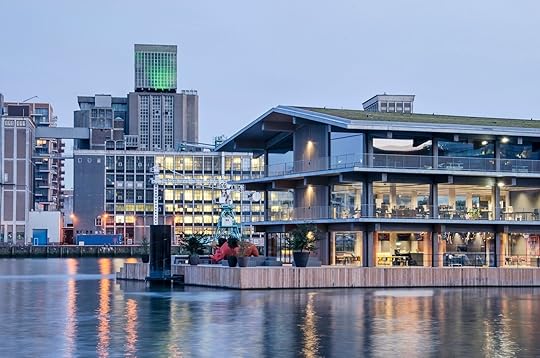
Floating office building. Photo: Frans Blok/Shutterstock
The idea for the floating city tour came from the company’s mantra of always making custom tours for its guests. The city has gained increasing notoriety for its floating infrastructure as a tool for climate resilience, but much of it is closed to the public. So Kamphuis and the team at De Rotterdam Tours arranged with property and business owners to take their guests to inside these places that they otherwise wouldn’t be able to see.
“When you are in the Rijnhaven, you have a floating farm, you have a floating park, you have floating Wikkelboats,” Kamphuis says. “We feel like it’s really nice for anybody just to see it, so we put it into a program that’s tailor made.”
Along the route travelers learn about the rebuilding of the city and its docks, including how they’ve evolved over decades to play a critical role in making the growing consortium of floating infrastructure possible. The tour passes by the Floating Havenlofts at Nassauhaven, a development of floating homes, and a guide that explains the evolution and significance of what’s viewable from the boat.
The tour includes access to three private areas that are generally unavailable to travelers. One is the deck where Wikkelboats, or small floating houseboats made of wrapped paper, are parked. Another is a floating office park, and finally, a floating oark. The “XL” version of the tour includes a visit to a floating farm – complete with animals – and starting in 2025 a floating brewery, where the tours will engage in a beer tasting. Travelers reach the floating infrastructure via a water taxi, which in itself provides a unique way to see the city.
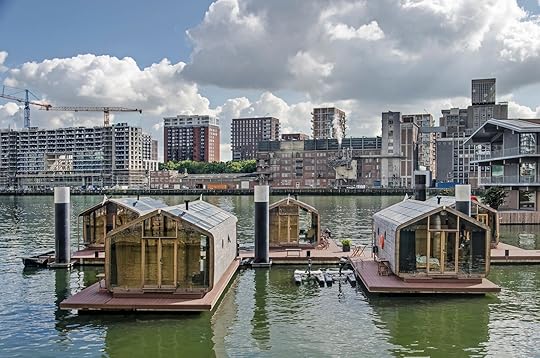
Wikkelboats. Photo: Frans Blok/Shutterstock
Tours cost $485 Euros, about $527, plus a small water taxi fee, and must be reserved in advance. The Rotterdam Floating City Tour, bookable via the company’s website, is two hours long and only available for groups, though you can add on the additional stops for the “XL” tour – including the farm and in 2025, the brewery – for an additional 125 Euros. Both tours offer perhaps the best glimpse into the future of climate-resilient urban design anywhere in the world.
“We use our water for climate adaptation not only for floating projects but also for tide parks, to grow food on the flat roofs, to retain water, and to help biodiversity, Kamphuis says. “It’s literally another level. Now we have the opportunity to use all of this for climate resilience.” 
Need a Passport in a Hurry? A Series of New Passport ‘fairs’ Could Help.
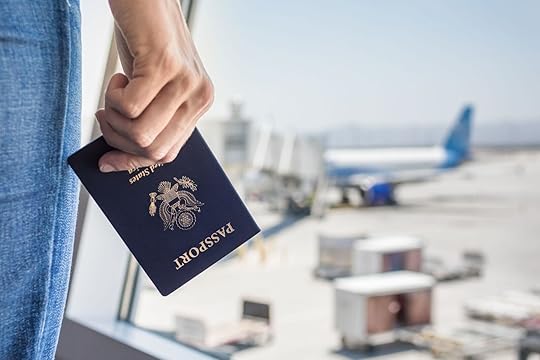
Getting a passport in a hurry is always a bit stressful, but in the years post-COVID, the process was slower than ever. In 2022, there were plenty of reports of passport issuances and renewals taking up to 18 weeks, or 4.5 months. By December 2023, the US State Department announced that processing times were coming down, citing an average wait time of six to eight weeks for processing.
While that’s better, it’s still a bit slow, especially when you take into consideration the time it takes to mail your application to the agency and get your passport printed and returned to you, which the government estimates could take an additional month. Fortunately, the government just announced a slew of new “Passport Acceptance Fairs” — events where you can complete and submit your passport application on site. While it may not speed up the processing times, it will cut down on the mailing time. And the fact that the government is hosting so many is also probably a good sign that it’s trying to make it easier to get a passport in a hurry for US citizens.
Passport Acceptance Fairs will be held in June and July across the US, mostly at municipal buildings alike libraries and post offices. Some require appointments, while at others, you can just walk in. The Passport Acceptance Fairs are only for new applications, so if you need to renew your passport, you still need to do it by mail. (You used to be able to do it online, but no word if or when that program will return).
Attending a Passport Application Fair won’t save any money on application and passport fees (which total $165 for first-time adults and $135 for children, plus $60 to rush the process), but it’ll at least save you the cost of postage. And you won’t need to worry about your application getting lost in the mail.
What to bring to a Passport Acceptance Fair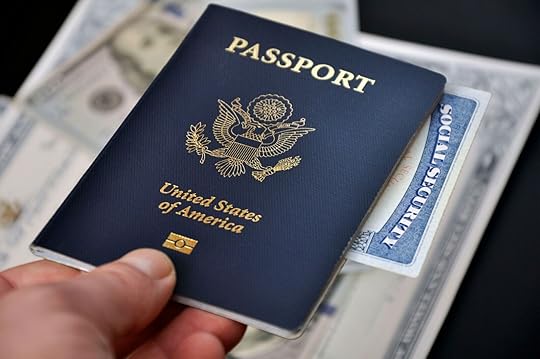
Photo: AliaksaB/Shutterstock
You’ll want to come as prepared as possible to a fair. Employees will be available to answer questions and help with forms, but the government is quite strict about what documents you need. That includes:
Proof of citizenship (usually a birth certificate)Proof of identity (like a drivers license or military ID)A second photocopy of said proof of identity, front and backA two-inch passport photo that meets strict requirements. You can have them taken at pharmacies like CVS and Rite-Aid.You can also speed up the process by filling out the passport application form in advance. Remember that if you’re applying for a passport for a minor, you’ll need to meet additional strict requirements, including dual parent consent.
Summer 2024 Passport Acceptance Fair datesJune 5: Somerville, NJJune 6: Manchester, NJJune 7: Nutley, NJJune 8: Exeter, CA; Tell City, IN; Fairfield, NJ; Greenville, SC;June 11: Verona, NJJune 12: Bridgewater, NJ; Toms River, NJ; Mahwah, NJJune 13: Clermont, FL: Kissimmee, FL; Lakeland, FL; Orlando, FL, Sanford, FL; Garfield, NJJune 14: Kissimmee, FL; Sanford FL; Orlando, FL, Wildwood, FLJune 15: Carrboro, NJ; Okeechobee, FL; Las Cruces, NM; Montpelier, VTJune 17: Brick, NJJune 18:Bergenfield, NJ, Verona, NJJune 22: Oroville, CA; Livingston, NJ; Milford, NH; Scottsdale, AZJune 26: Bridgewater, NJJune 27: Fairlawn, NJJune 29: Franklin Park, ILJuly 6: Pensacola, FLJuly 27: Franklin Park, ILAdditional events will likely be added throughout the summer, so keep an eye on the official events page if you think you may be in need of a passport in a hurry — or better yet, just do the application now before you plan that international getaway. 
Airlines Have Gone Too Far: New ‘UltraBasic’ Fare Lacks Carry-Ons, Seat Choice, and Refunds

If you’re already infuriated by the fact that airlines make you pay for a checked luggage and seat selection, and don’t offer anything to eat even on hours-long cross-country flights, you’d better sit down because the latest fare announcement from Canadian airline WestJet will surely send you in an incontrollable rage. WestJet’s new UltraBasic fare is as bare bones as low-cost carrier fares get.
WestJet’s UltraBasic fare allows you to sit down and get to your destination, and that’s about it. The rules of this brand new hellish fare are: no carry-on (unless you’re on a transatlantic or transpacific flight), no points collection, board last, and sit in the back of the plane with the rest of your fellow plebeians — but not necessarily with your travel companions. Also, needless to say, there are no changes, cancellations, or refunds possible for your flight.
“UltraBasic is an innovative cost-effective solution that strengthens WestJet’s ability to offer guests budget-friendly airfares to more destinations,” said John Weatherill, WestJet Group Executive Vice-President and Chief Commercial Officer in a press release.
Under the guise of offering travelers cheaper options to fly, WestJet’s new fare will premiumize air travel a little bit more by creating a new class within its aircrafts: Business, Premium Economy, Economy, and Absolute Misery. Because you can make flying in Absolute Misery a little better by paying to select a seat or to add a checked bag (not a carry-on). If you can afford it, you can also opt to purchase WestJet’s Extended Comfort option and climb up the social and comfort ladder just a little bit.
Also, WestJet’s UltraBasic fare is clearly a ploy to limit the number of carry-on luggage on board. Having made air travelers pay for a checked bag, airlines are now struggling with the consequences of their actions: too many carry-ons in the cabin which leads to delayed boarding procedures. Now, they want us to travel with a personal item only. Soon, they’ll make us travel with the clothes on our back and nothing else.
But still, air travelers trying to save a buck should be grateful as traveling in Absolute Misery is not all that bad. In a press release, WestJet explains that UltraBasic fare passengers will still benefit from “the same friendly service, onboard food and beverage offerings, and access to the WestJet Connect inflight entertainment and connectivity system as before.” Phew! For a second, I was worried they would also cut off the supply of tomato juice and the three episodes from The Big Bang Theory season nine that currently prevents the economy passengers from completely losing their minds.
A few days ago, I took a WestJet flight from Barcelona, Spain, to Calgary, Canada. The seat selection cost me $63 and my expensive and brand-new Sterling Pacific carry-on was checked at the last minute (and consequently damaged) because it was supposedly too big for the Dreamliner’s overhead bins (it was not for Air Canada just 10 days before, by the way). Not only that but the nearly 10-hour flight in economy was so uncomfortable that three days later I’m still recovering from it. The only positive aspects of this $721 one-way flight was the fact that I got to sit near my partner and managed to earn a handful of points. With the new fare, you won’t even get that little sliver of happiness. 
Matador Network's Blog
- Matador Network's profile
- 6 followers



